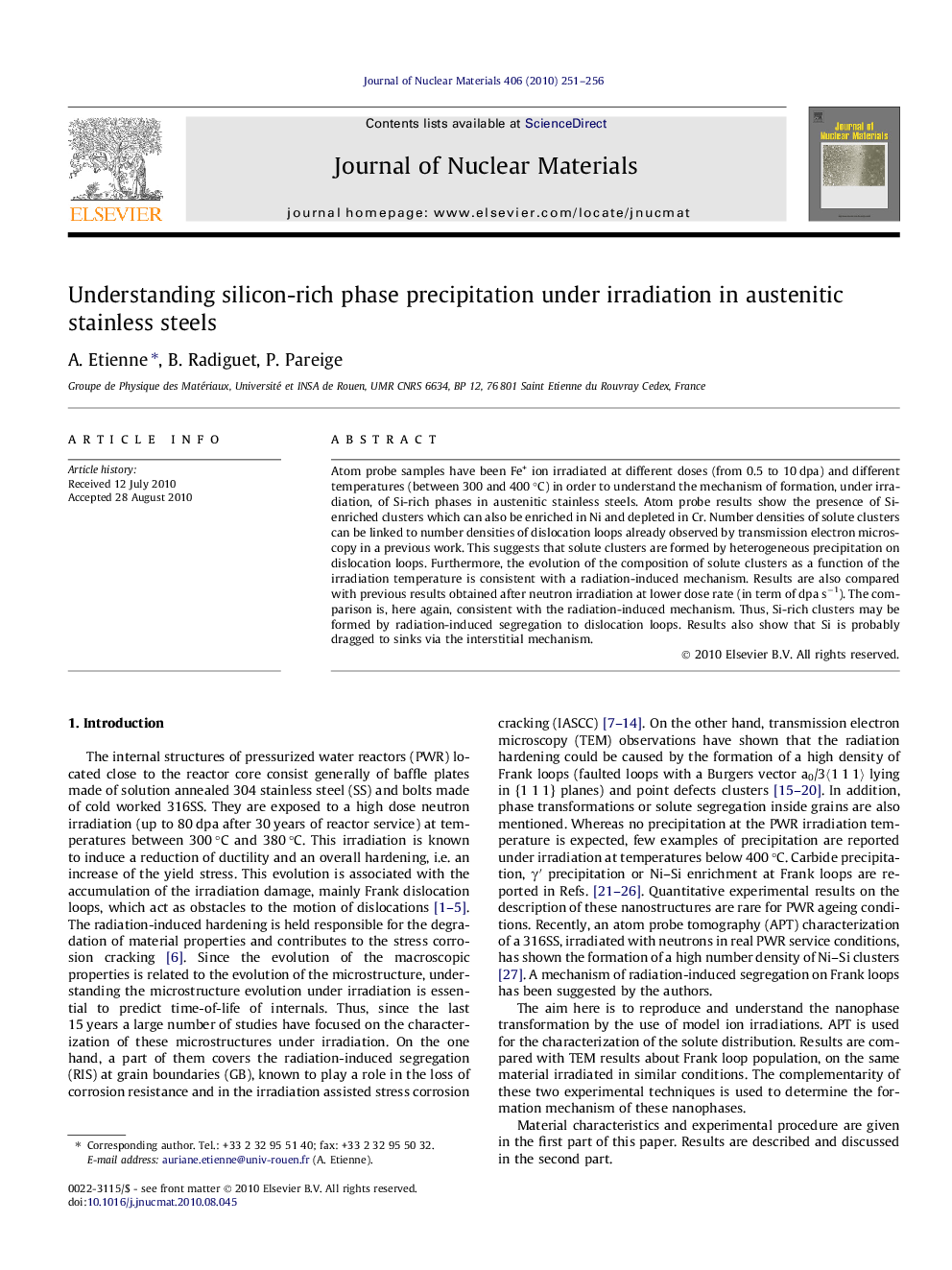| Article ID | Journal | Published Year | Pages | File Type |
|---|---|---|---|---|
| 1567401 | Journal of Nuclear Materials | 2010 | 6 Pages |
Atom probe samples have been Fe+ ion irradiated at different doses (from 0.5 to 10 dpa) and different temperatures (between 300 and 400 °C) in order to understand the mechanism of formation, under irradiation, of Si-rich phases in austenitic stainless steels. Atom probe results show the presence of Si-enriched clusters which can also be enriched in Ni and depleted in Cr. Number densities of solute clusters can be linked to number densities of dislocation loops already observed by transmission electron microscopy in a previous work. This suggests that solute clusters are formed by heterogeneous precipitation on dislocation loops. Furthermore, the evolution of the composition of solute clusters as a function of the irradiation temperature is consistent with a radiation-induced mechanism. Results are also compared with previous results obtained after neutron irradiation at lower dose rate (in term of dpa s−1). The comparison is, here again, consistent with the radiation-induced mechanism. Thus, Si-rich clusters may be formed by radiation-induced segregation to dislocation loops. Results also show that Si is probably dragged to sinks via the interstitial mechanism.
